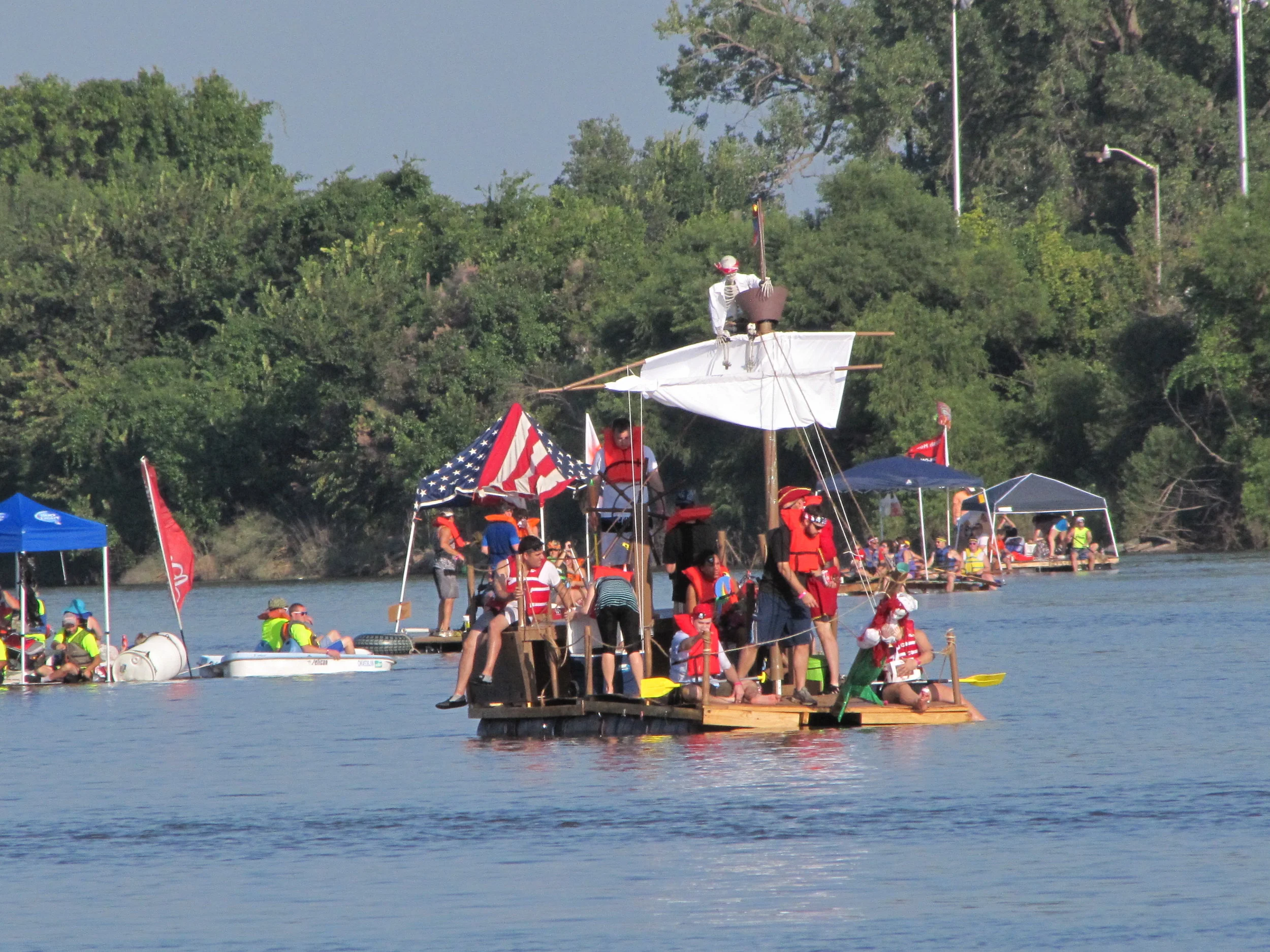Libertarian Party grows by leaps and bounds in 2016 election, sets sights optimistically on 2018
/By: Scott Emigh, Editor-in-Chief
Libertarianism is on the rise.
The 2016 election has been arguably the most successful election in the history of the Libertarian Party (LP), and not just on the Presidential level. While the unpopularity of both major party candidates sent Gary Johnson to 3% with more than 4 million ballots, general disaffection for establishment politics helped the 45 year old party to record performances in the House, State, and Gubernatorial elections as well.
In Oklahoma specifically, the LP made its way onto the ballot for the first time since 2000 and will retain ballot access into 2018 after Johnson achieved 6% of the Oklahoma vote.
Sixteen Oklahoma libertarians ran for office in this week's election, and though none won, they polled at an average of 10%. Oklahoma County Clerk candidate Chris Powell had the best performance with 36% of the vote, followed by State Senate District 35 candidate Frank Grove with 35%. House District 39 candidate Clark Duffe carried 23%. At the national level, U.S. Representative District 4 candidate Sevier White carried 4% and District 5 candidate Zachary Knight won 6%. U.S. Senator candidate Robert Murphy won 3% in a five-way race challenging popular incumbent Republican James Lankford.
With incumbent Republican Governor Mary Fallin term-limited, the Libertarians will need to secure at least 2.5% of the vote in 2018 to remain on the ballot for the next Presidential election.
“Looking forward, we don’t really see that 2.5% mark as a barrier to future success. In 2018 and beyond, we’ll be running to win. The Libertarian message has resonated with voters in Oklahoma, and we will work tirelessly to ensure citizens have the opportunity to support principled libertarian candidates seeking office at every level of state government," said Party Chair Tina Kelly in a press release this week.
The LP was officially formed on December 11, 1971 in Colorado Springs, Colorado. By 2016 the LP was the third largest political party in the United States with 411,250 registered voters. The party currently claims to hold 147 local elected offices across the country.
Presidential Campaign History
John Hospers was the first presidential nominee of the LP and Theodora Nathan was selected as VP. Though the 1972 ticket only gained 3,674 votes for tenth place in the general election, they received one electoral vote from a faithless elector, marking the first time in U.S. History a female has received an electoral vote.
In 1976 the party nominated Roger MacBride, the faithless elector from 1972, with running mate David Bergland. The ticket brought home 172,553 votes and finished fourth.
The 1980 ticket set the LP record for the next three decades as Ed Clark and billionaire David Koch brought in 921,128 votes and finished in fourth place. They broke 1% of the popular vote for the first time, a feat that would not be repeated until 2012.
The LP saw massive decline in 1984 with only 228,111 votes for David Bergland and James Lewis, but unsurprisingly due to the funding cut of not having a billionaire on the ticket. It was still an improvement over 1976 and should be considered a victory for the LP.
1988 saw the arrival of Ron Paul on the ticket, arguably the most famous Libertarian (among non-Libertarians) to date. Paul and running mate Andre Marrou took in 431,750 votes. Marrou took over the ticket in 1992 and saw the first legitimate decrease in LP support with 290,087 votes. The rise of the party stagnated from there as Harry Browne headed the ticket in both 1996 and 2000, with Michael Badnarik taking over in 2004.
The LP’s presidential campaign has only grown since 2000 as Badnarik finished with 397,265 and 2008 candidate Bob Barr brought in 523,713.
In 2012 former Republican New Mexico Governor Gary Johnson and Justice Jim Gray waged the most successful campaign to that point, finishing with 1,275,821 votes and 1%, a feat that Johnson shattered in 2016. In a year with declining voter turnout that saw the eventual victor Donald Trump attain less votes than the second place finisher of the last two elections; by the time polls had closed, Johnson and former Republican Governor of Massachusetts William Weld had broken 3% with 4,058,500 votes and third place for the second-straight election. They fell short of their 5% goal, but successfully waged the most successful LP campaign to-date by a wide margin.
U.S. House Campaign History
The party also made their first attempt at the House of Representatives in 1972 and finished 18th with 2,028 votes. That number ticked up to 71,791 in 1976 for seventh place, 64,310 in 1978 for sixth place, and by 1980 was officially the third party with 568,131 votes. Since then, the LP has only slipped to fourth place three times, always behind independent candidates, and has maintained third place in every election since 1996. They broke the 1% mark in 1998 and have done so numerous times since.
To-date, the LP has still not won a house seat, but beat their 2000 record in House campaign votes with 1,713,220 this year. Most successful among the LP were three Arkansas candidates. Kerry Hicks took 25% of the vote in Congressional district 4. Mark West and Steve Isaacson took 23% each in districts 1 and 3, respectively. Of the 75 candidates to run, 42 grossed 5% or more of the vote, twelve took 10% or more, and seven took 15% or more. The all-time best performance for an LP House candidate was Joel Balam who took 31.5% of the vote in Kansas in 2012.
U.S. Senate Campaign History
The first Libertarian attempt at the Senate was waged in 1976 with candidates in nine of the 33 contested seats. In 1994 Scott Grainger attained 6.8% of the vote in Arizona, smashing the previous record of 3.9% set by Montana candidate Larry Dodge. His record was undone in 2000 by Massachusetts candidate Carla Howell with 11.9%. Massachusetts was favorable for Libertarians again in 2002 when Michael E. Cloud brought in 16.6% which stood as the most successful LP Senate campaign till 2016. That year, the LP brought in 1.739% of the vote.
2016 was a record breaking year for the LP with 20 candidates running for Senate attaining 1,700,969 votes. Alaska candidate Joe Miller brought in 30% of the vote, trailing Republican victor Lisa Murkowski by 14%. Miller beat the Democratic candidate by 19%. Two other Libertarians broke 5% in senate elections.
U.S. Gubernatorial Campaign History
The first ever Libertarian attempt at a governorship was in 1976 as Arlan Andrews drew 0.29% of the vote in North Carolina. In 1978 seven candidates competed in gubernatorial elections and Mabel Everett took home 4.6% in New Hampshire. Dick Randolph led seventeen libertarian candidates in 1982 and won 14.9% of Alaska. Randolph owns the most successful LP gubernatorial campaign to-date. Since then, only one other LP candidate has broken 10%; Wisconsin’s Ed Thompson in 2002. This year the LP had candidates in ten out of twelve races and averaged 2.6% of the vote. New Hampshire candidate Max Abramson led the most successful campaign of the season with 4.3%.
It remains to be seen if the Libertarian Party will continue its growth in the next midterm election, but with more Americans identifying as politically independent than at any point in the country’s history, both major parties will likely have their eyes on the Libertarian Party in the years to come.




